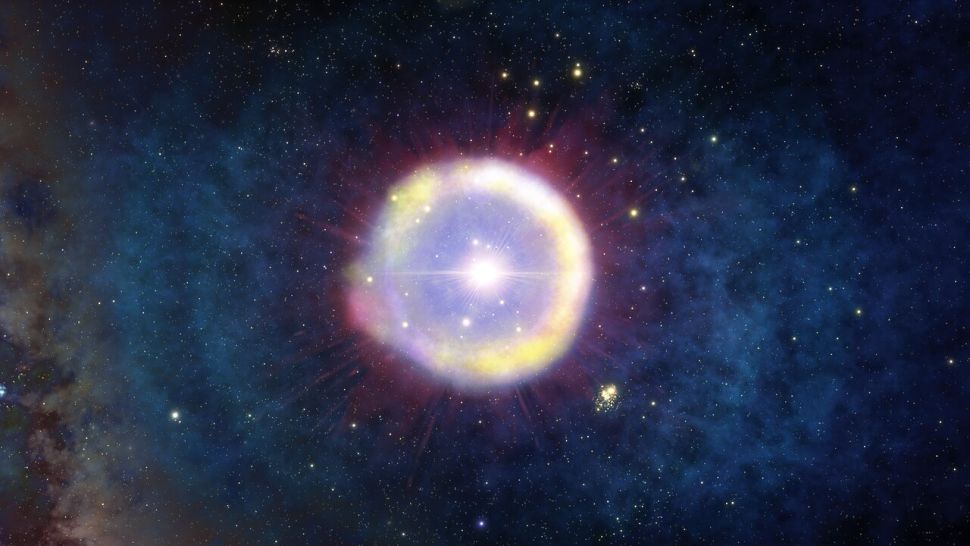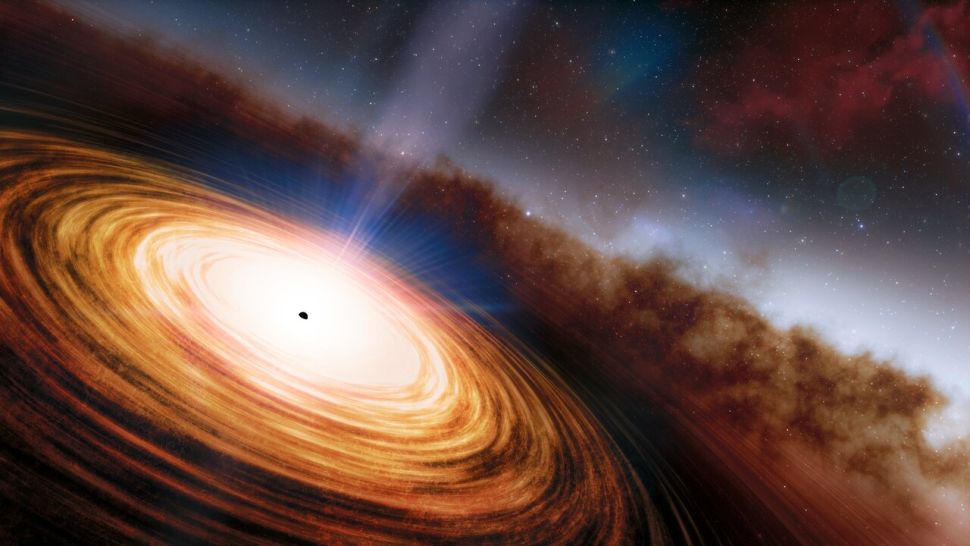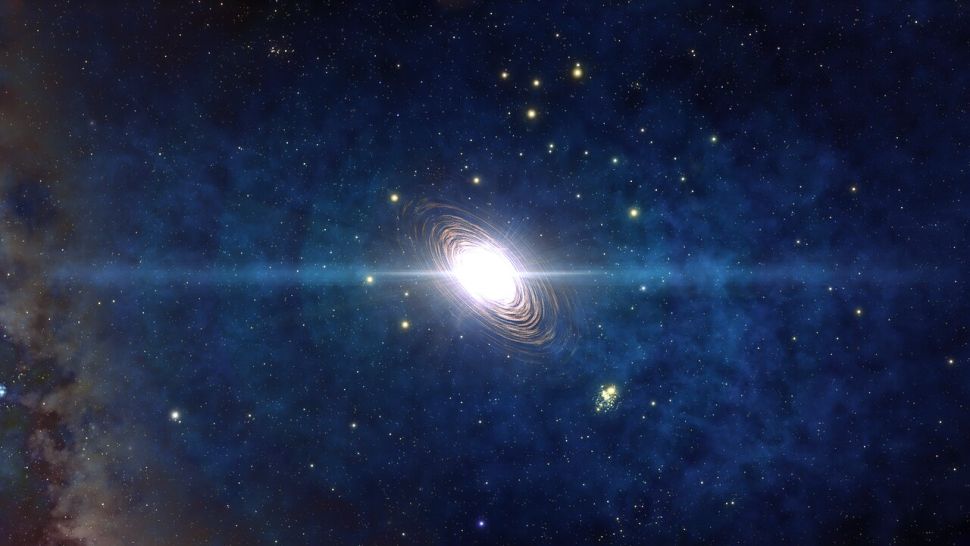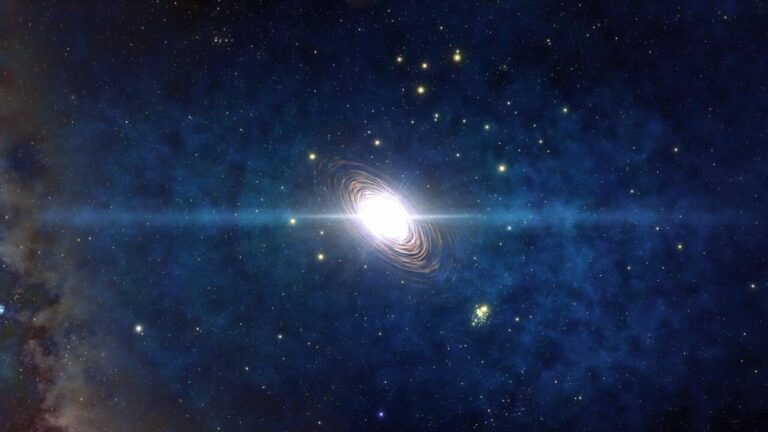Researchers find remnants of “super-supernovas” that obliterated the first stars.
The team examined chemical traces of Population III stars using a 13.1-billion-year-old quasar.
A star that erupted in a “super-supernova” when the cosmos was only 100 million years old may have left chemical remnants, according to astronomers.
These Population III stars of the first generation died in massive supernova explosions that seeded the cosmos with the chemical elements they had formed over the course of their existence. Comprehending how these first stars endowed the universe with heavy metals is crucial to understanding its development during its 13.7 billion-year existence since this material was absorbed in the subsequent generation of stars, planets, and even humankind.
However, until recently, astronomers have not been able to locate any direct proof of one of these early Population III stars.

In order to analyze an extremely distant quasar, which is a superbright object powered by a massive black hole, as it was 13.1 billion years ago, when the universe was only 700 million years old, a team of researchers used the 8.1-meter Gemini North telescope on the island of Hawai’i. They discovered a cloud with a distinct chemical signature surrounding the object.
When the chemical constituents of the cloud were determined, the researchers discovered an extraordinarily high ratio of iron to magnesium that was ten times higher than the same ratio in the sun. The only possible explanation for this debris cloud, according to astronomers, is that a first-generation star with a mass 300 times that of the sun burst in a supernova known as a pair-instability supernova.
Although pair-instability supernovae have not yet been observed, astronomers hypothesize that these spectacular explosions take place when massive stars with masses between 150 and 250 times that of the sun approach the end of their lifetimes.
According to one theory, photons in a star’s core spontaneously transform into negatively charged electrons and their positively charged counterparts, positrons, during this tremendous cosmic explosion. This puts a stop to the radiation pressure that keeps stars from falling to Earth throughout their lifetimes. As a result, the star gravitationally collapses, which leads to a supernova explosion that vaporizes the star’s outer layers.

Pair-instability supernovas, however, do not accomplish this; instead, they blast all of their material into space. Ordinary supernovas leave behind stellar remains in the form of neutron stars or black holes.
The only ways to follow these supernovas are either by actually watching them as they occur, which is exceedingly implausible given how wide space is, or by identifying the chemical signature of the material they blast out. This means that they cannot be found by searching for star remains.
According to co-author and University of Tokyo astronomer Yuzuru Yoshii, “it seemed evident to me that the supernova candidate for this would be a pair-instability supernova of a Population III star, in which the entire star explodes without leaving any relic behind.” The discovery that a pair-instability supernova of a star with a mass around 300 times that of the sun produces a magnesium to iron ratio that coincides with the low value we calculated for the quasar made me happy and a little startled.
Spotting the chemical signature of a first-generation star
In order to look for signs of exploded Population III stars, Yoshii and his co-authors Hiroaki Sameshima of the University of Tokyo and Timothy Beers of the University of Notre Dame turned to earlier observations made by the 8.1-meter Gemini North telescope using the Gemini Near-Infrared Spectrograph (GNIRS).
The light that travels through a cloud or atmosphere has various “fingerprints” left by the elements because they absorb and emit light at particular wavelengths. By using this light to identify components by their unique fingerprints, spectrographs like GNIRS may ascertain the cloud’s chemical makeup. However, since the brightness of a signature may be influenced by elements other than abundance, estimating the amounts of an element remains challenging.

In order to solve this issue, astronomers at the University of Tokyo created a technique that makes use of the strength of the light wavelengths coming from a quasar’s light spectrum. Using this method, the researchers were able to identify the quantity of several elements in the clouds around the quasar, which revealed an exceptionally high concentration of iron relative to magnesium.
This, according to Yoshii and his colleagues, is the most convincing evidence of a Population III star and a pair-instability supernova to date. The team is interested in studying comparable quasar clouds to see if they have these properties.
Although the event would only be observable from a great distance since high-mass Population III stars would have completed their lives long ago, their chemical traces may be found closer to home. The team hypothesizes that the pair-instability signal may persist for a very long period, suggesting that the remnants of long-dead stars may likewise be imprinted on local universe objects.
Beers stated in the same statement, “We now know what to look for; we have a roadmap. “We would expect to discover evidence for it if this occurred locally in the very early cosmos, as it should have done.”
The team’s research is available as a preprint on the research repository arXiv.org and will be published in the Astrophysical Journal.
Do not forget to share your opinion with us to provide you with the best posts !





0 Comments